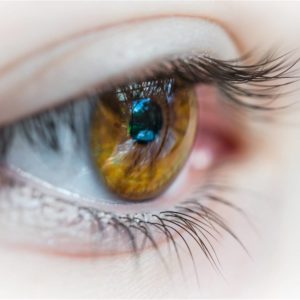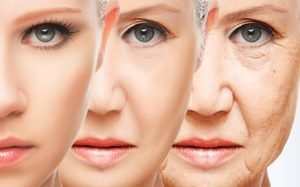Muscle Inflammation and Pain: Types, Diagnosis and Treatments

It is very common to suffer some type of muscle pain or inflammation from time to time, either in large areas or in other more specific areas of our body. In most cases, these discomfort disappear on their own with rest, while on other occasions, they remain for longer periods of time. This pain can cause mobility problems and discomfort on a day-to-day basis. In this article we tell you what are the most common causes of muscle inflammation and the remedies or treatments that exist for them.
What is Muscle Inflammation?
Muscle inflammation is the reaction of the muscles to undergoing what we call stress. You can s be caused by overexertion while sport is done by a bad stretch or blow. This ailment can affect one or more muscles and ligaments, tendons and fascia can also be involved.
The previously named fascia is the tissue that surrounds all the body’s organs , from muscles or tendons, to cells, thus connecting all parts of the body.
What are the most common causes of muscle pain?
The causes of inflammation and muscle pain are many and varied, from a bad stretch before performing any sports activity to a cold that causes body pain.
One of the most common causes of this ailment is muscle overload , which usually appears after prolonged exposure of the muscle in question to a stimulus called TUT or time under pressure. This type of discomfort does not prevent a normal daily life nor is it an impediment to playing sports, but constant pain will be noticed when performing any movement.
These muscle overloads are unpredictable, but they are less likely to appear if you ensure a good stretching routine before and after any sports activity or that is outside the daily routine.
Another cause of muscle pain are injuries to the muscle fibers , which are characterized by the appearance of sudden, sharp and intense pain that is usually located in a very specific point. These types of injuries are usually much more painful and can prevent any movement of the affected muscle.
As mentioned above, another very common cause of muscle pain can be the bodily discomfort that is suffered during an infection from a flu or a cold, and which may have nothing to do with an injury.
How can muscle pain affect everyday life?
Inflammation and muscle pain can become very annoying and long-lasting, causing disturbances (separate) in daily activities.
If they persist over time, one of the most common problems is sleep disturbance, caused by muscle discomfort that prevents rest.
Another pathology that can appear after a muscle injury can be fatigue, originated as a method of defense of the body during or after intense physical activity. It is more common in people who play sports regularly.
To avoid muscle fatigue, the basic tips are a good rest, intake of carbohydrates that help regenerate muscles and take care of warm-ups before and after sports activities.
Symptoms of Muscle Pain
Muscle pain mainly affects the muscles of the arms, legs, back, shoulders, abdomen, and hips, although any muscle in the body can be affected. This pain can be accompanied by several symptoms:
- Shooting pains
- Numbness
- Muscular stiffness
- Tingling
- A burning sensation
- Sharp pains
- Difficulty or discomfort when performing certain movements
- Swelling
TYPES OF CHRONIC MUSCLE PAIN: FIBROMILAGIA AND INFLAMMATORY MYOPATHIES
Inflammatory myopathies are chronic diseases , which are often accompanied by muscle weakness. It is also known as Myositis. These are idiopathic conditions, that is, their cause is unknown.
The main symptoms of myositis are muscle weakness, caused by damage to muscle fibers, fatigue after activities as simple as walking, or shortness of breath.
Fibromyalgia is a condition that causes tenderness in the muscles and the white tissue that surrounds them and can cause difficulty sleeping, fatigue, and even severe headaches. It is a chronic pain and, like Myositis, its exact cause is unknown.
Symptoms of this muscle condition include pain and stiffness throughout the body, fatigue and tiredness, depression and anxiety, and numbness in the hands and feet. Also sleep disturbances can be caused by fibromyalgia.
Diagnostic Tests for the Appearance of Muscle Pain
The pathologies that cause muscle pain are usually difficult to diagnose, since sometimes the common knowledge of several specialists is necessary for their final diagnosis.
With regard to the diagnostic tests that can be useful in these cases, we find several:
- Electromyograms help assess the health of muscles and the motor neurons that control them. It consists of the graphic recording of the electrical activity of the different muscles of the body. It is done by introducing a fine needle into the muscle or area to be explored.
- Another technique for diagnosing muscle pathologies is biopsy , that is, the extraction of tissues and cells of the specific muscle and examining them under a microscope. This test will help find out if the muscle being examined has any disease or infection.
- Ultrasonography can also be helpful in showing the spasmodic response at certain points in the muscle. In this way you can check if the muscle suffers any injury.
Other tests such as X-ray or MRI are not as helpful in this case, as they do not show pathological changes in the muscle or connective tissue.
Best Treatments to Relieve Muscle Pain

Treatments for muscle conditions will depend on the type in question, but all of them will require taking muscle relaxants to help reduce pain and inflammation. In the case of chronic pathologies, they will be palliative treatments.
Some non-physical treatments that will help are corticosteroids, ice in case of inflammation and the compression bandage that prevents the mobilization of the muscle for its speedy recovery.
Even so, it is always recommended to go to a specialist when any type of muscle pain appears to guarantee the best diagnosis and treatment.
Physiotherapy for muscle pain
Physiotherapy treatments will be decisive in the case of muscular injuries, since they will constitute the main rehabilitation treatment for ailments.
This will be the most painful part of the treatment, since the muscle will be stimulated to make it return to its initial state, but once the discomfort is over, it will help to relieve the pain and to recover the damaged muscles in case of not being chronic conditions.








